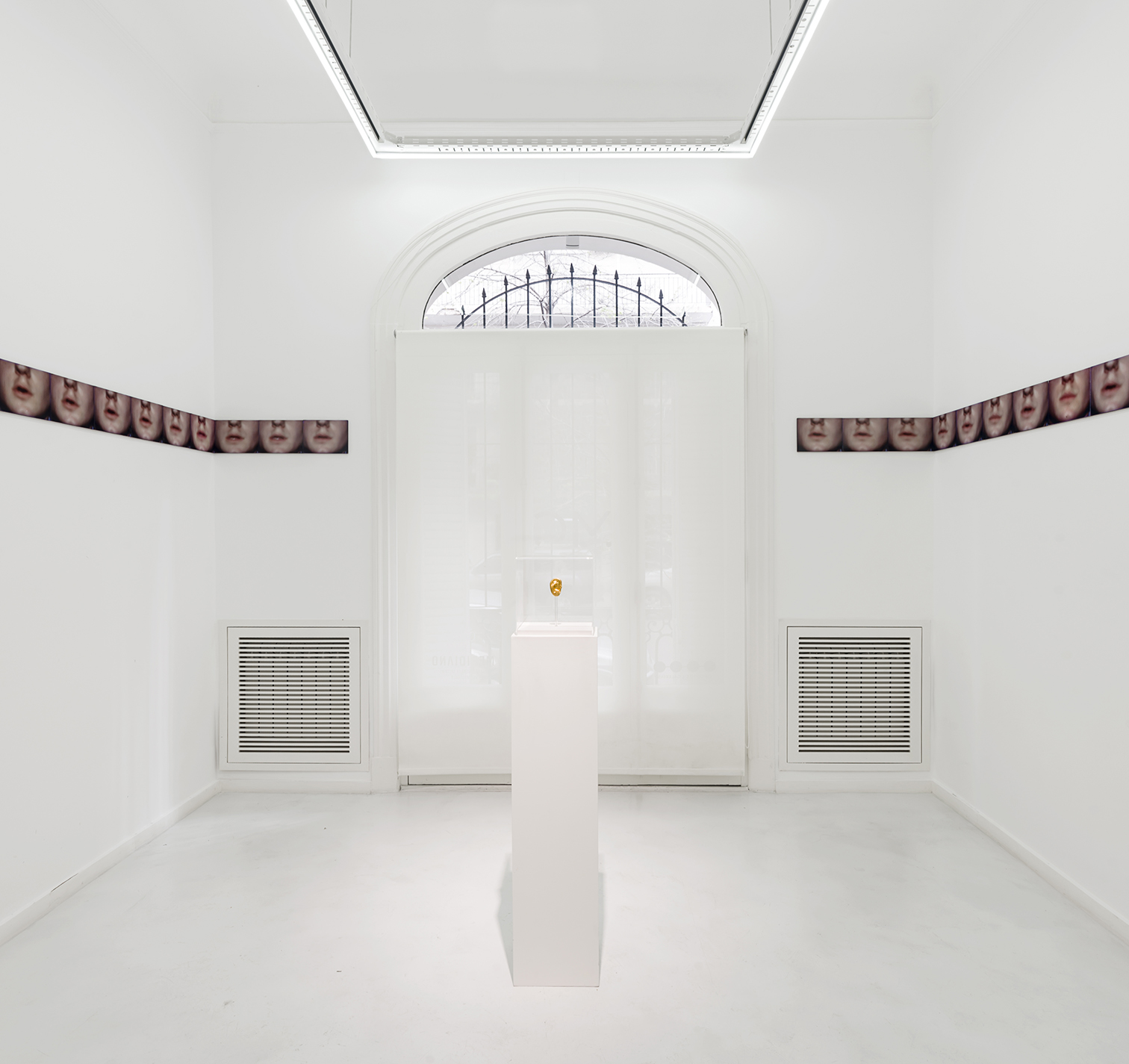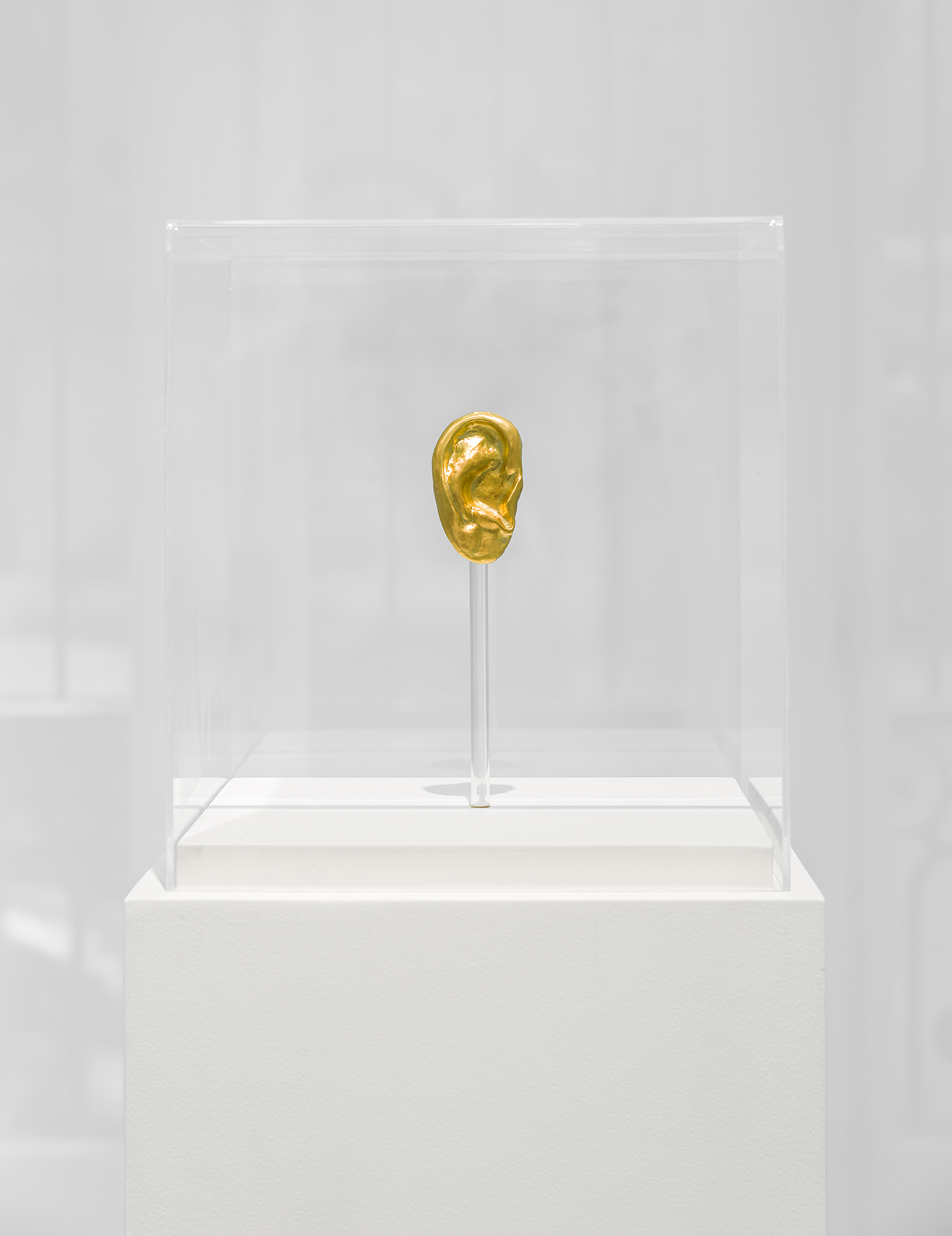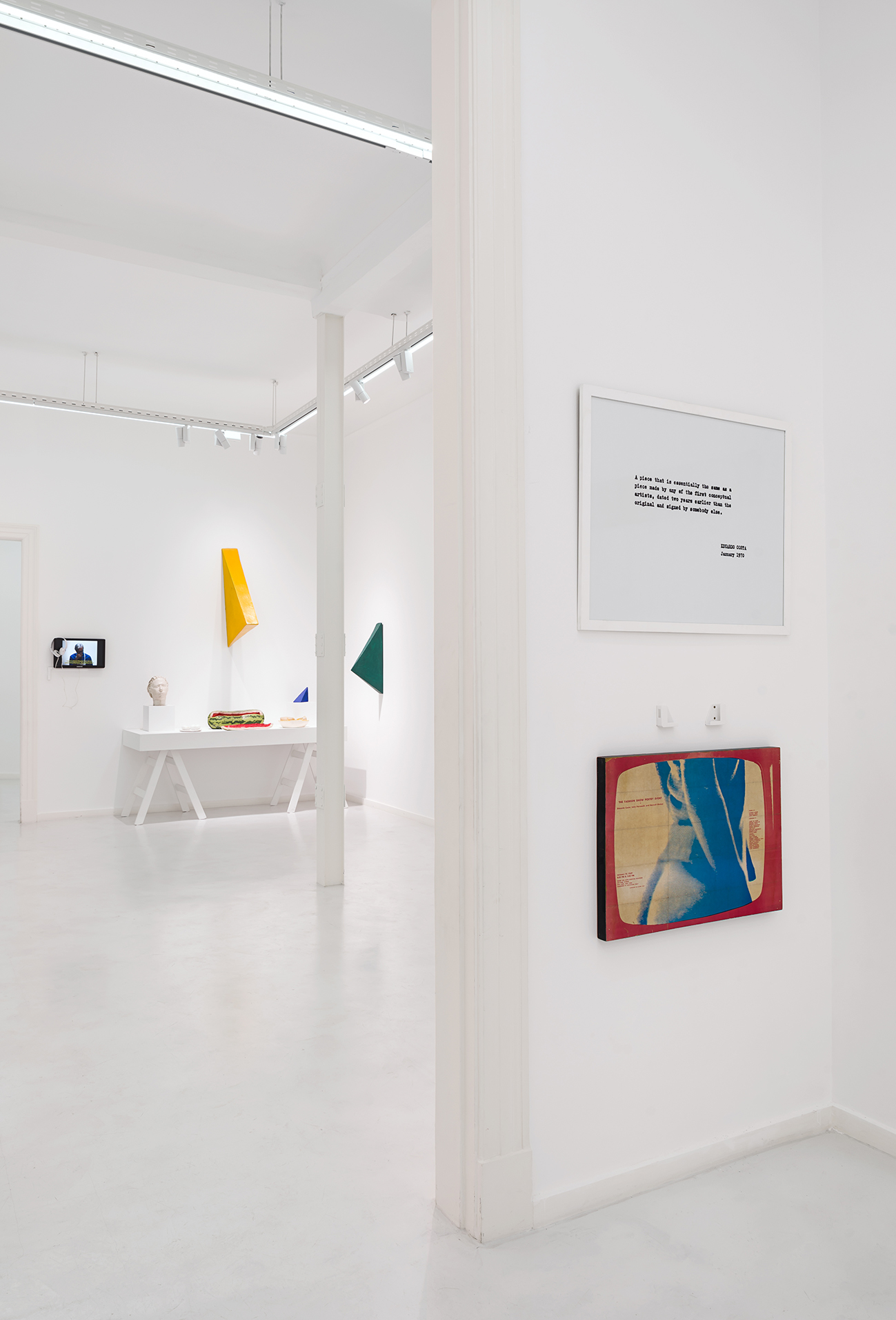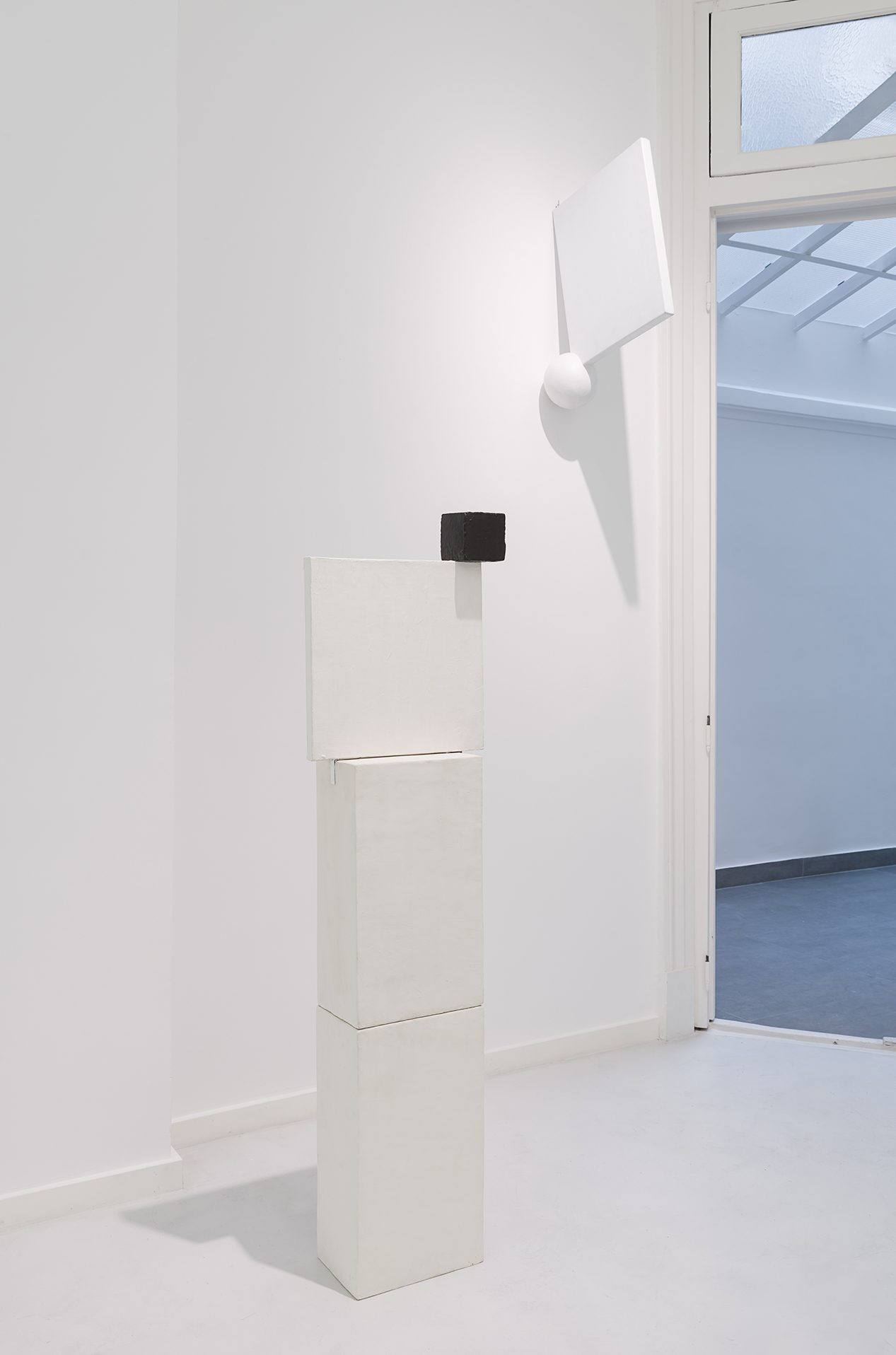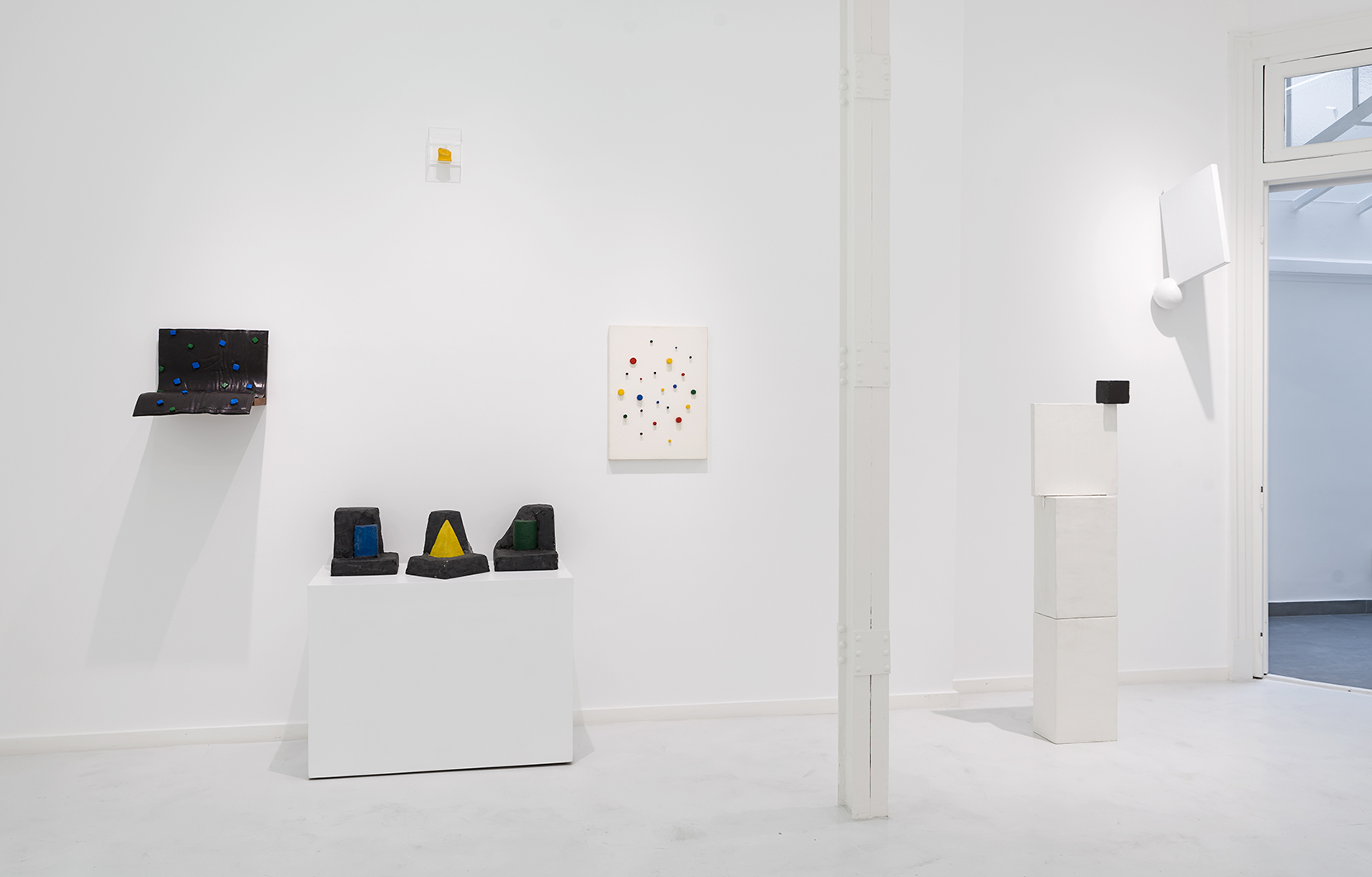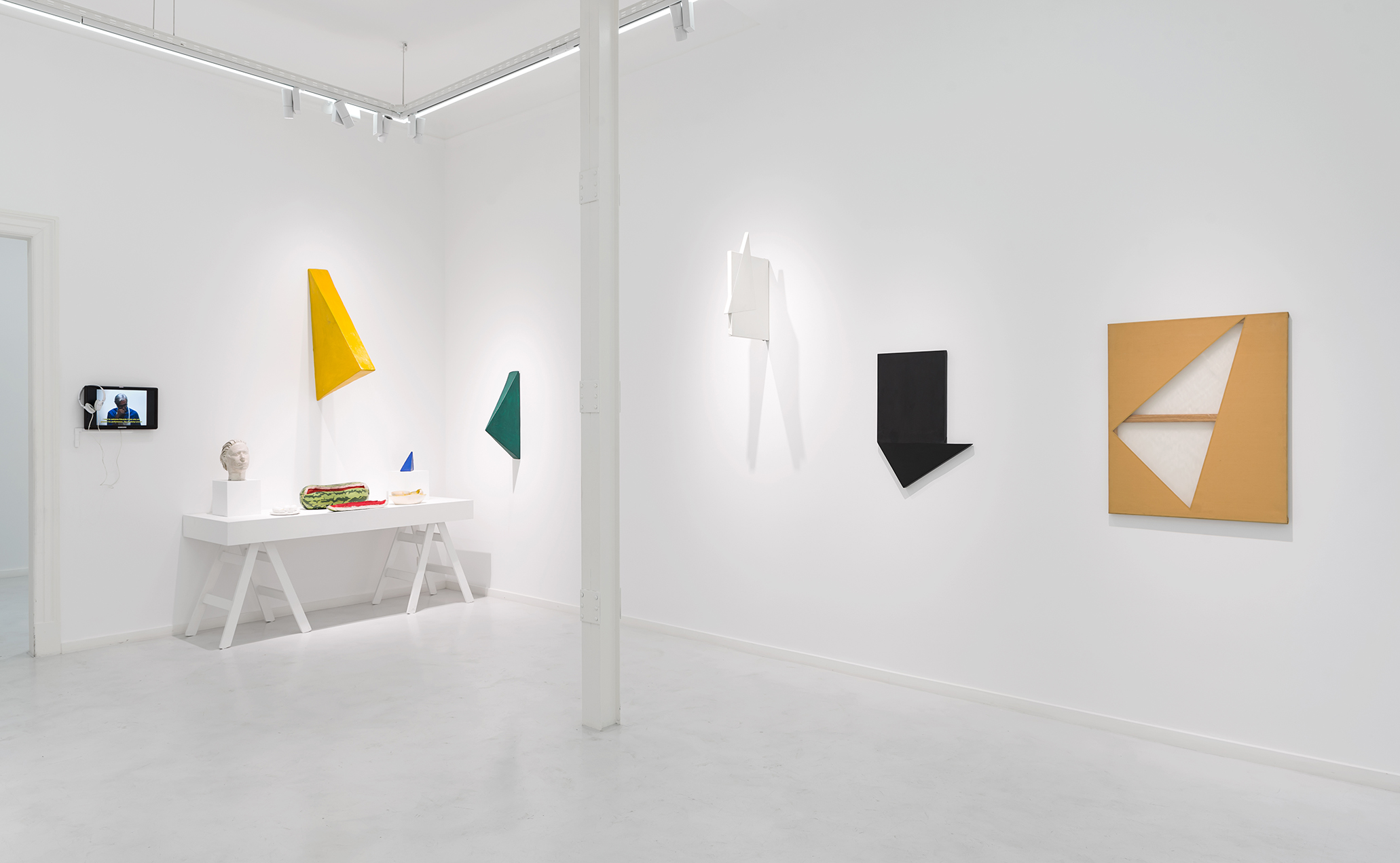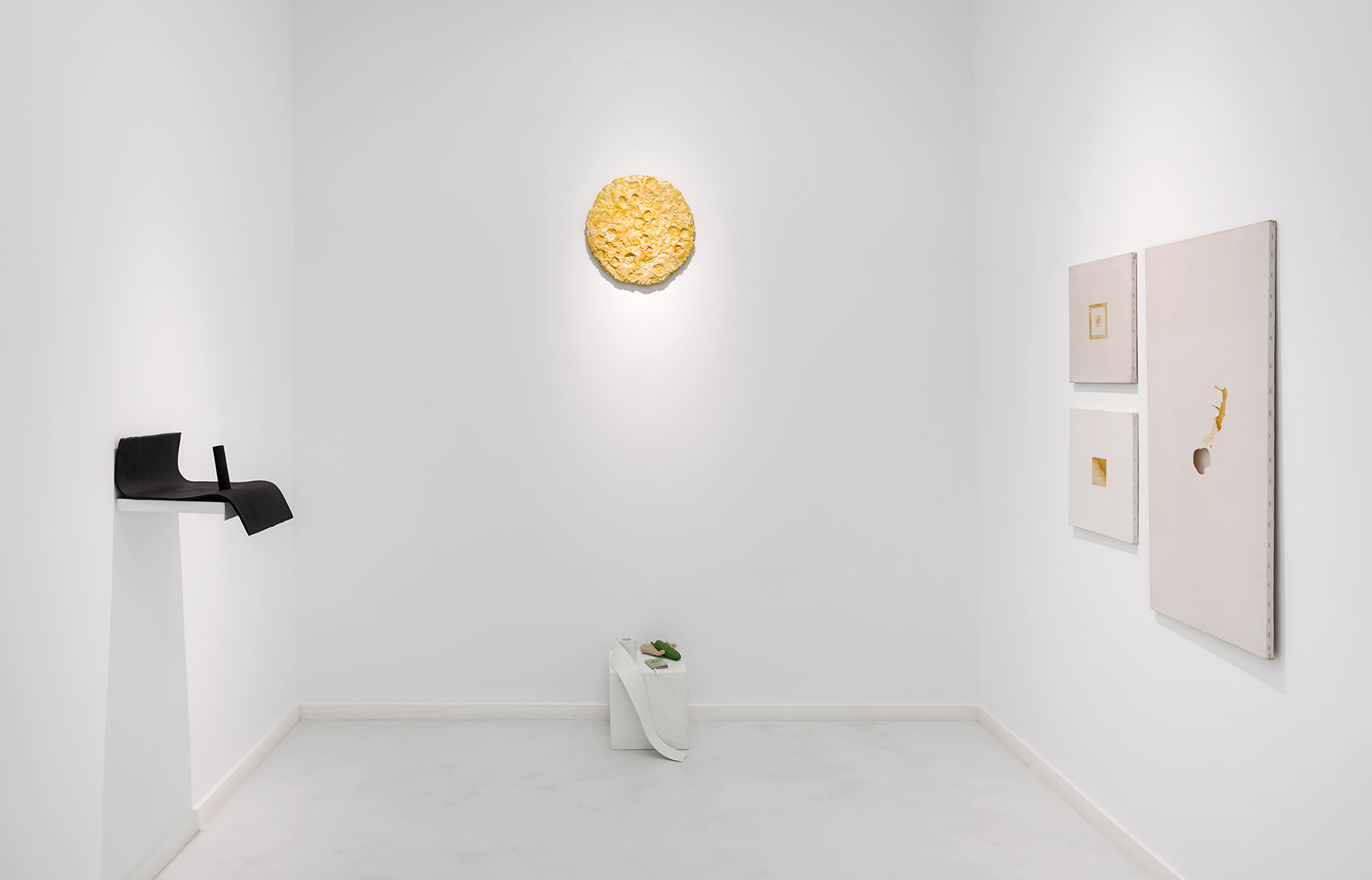Realidades sonoras y ficciones visuales
Eduardo Costa: 1966-today
Professor of letters, editor, proto-conceptualist (Alberro, 2001), genre creator (Herrera, 2008), sound poet, fashion novelist, journalist, essayist, volumetric painter are some of the titles Eduardo Costa has been defined with throughout his career: Buenos Aires, Rio de Janeiro and New York, from 1966 to the present.
Tireless in his search for new paths in art, this admirer of Duchamp has the ability to find his artistic materialities in the unthinkable: a few stolen dialogues in the street to create the first oral literature, a fictional happening for a mass media art, a fake and unreachable gold accessory to infiltrate the mass media of fashion, semen itself as organic acrylic and acrylic as sculptural clay to expand the possibilities of painting.
Sound realisms and visual fictions. Eduardo Costa: 1966-hoy proposes a non-linear journey through the artist’s career in the gallery’s three rooms, using as reference points three events that took place in three spaces that are as emblematic as they are disparate: an iconic fashion magazine, a traditional fine arts museum, and a legendary rock record.
Anatomy lesson
“Don’t suffer, don’t suffer, it’s only fiction!”, Eduardo Costa requested to an audience that alternated between surprise and astonishment at the dissection of each of the works and the subsequent exhibition of their entrails. Presented on November 22, 2004 at the Museo Nacional de Bellas Artes, La biología de la pintura n.° 2: La lección de anatomía was a didactic performance conceived to explain the invisible in the works belonging to a new genre developed by Costa since 1994: volumetric painting. Referred to by the American critic and poet Carter Ratcliff, volumetric paintings are composed not only of external surfaces but also of internal spaces. A volumetric painting of a watermelon is green on the outside, white and red on the inside. A head portrait contains both the organs, muscles and bones, invisible to the viewer, as well as the visible features traditionally manifested in flat painting or sculpture. Geometric abstractions are usually pure monochrome, painted in the same color from beginning to end. Without any other materiality than acrylic pigment and an occasional thickener, volumes are obtained by adding layer upon layer. The volumetric paintings free themselves from the traditional material supports of painting and sculpture to support themselves in each brushstroke with the aesthetics of modernism and the historical avant-garde. Thus, the pigments dissolve, thicken and solidify when mixed with constructivist, neoplasticist, concrete, perceptualist, minimalist or “pop” molecules. “For the (volumetric) paintings are the result of a wide range of concepts and legacies whose complex synthesis provides insight into how modernist paintings can be productively reformulated in the 21st century” (Alberro, 2001).
Of visual fictions and sonorous realisms
“The most exciting thing I’ve seen in recent years” proclaimed Alexander Liberman, art editor of American Vogue magazine between 1941 and 1962, after his meeting with Costa thanks to the intermediation of gallery owner Leo Castelli. On February 1, 1968, a strange accessory was published in its pages: Oreja. Photographed and commented by Richard Avedon and modeled by Marisa Berenson, granddaughter of surrealist fashion icon Elsa Schiaparelli and renowned art critic Bernard Berenson. Made in gold on the mold taken from Argentine model María Larreta in 1966, this object is part of Fashion Fiction I, along with other jewelry in the form of phalanges and hair. Costa was trying to broaden its audience, reaching out to the fashion mass media with a strategy that included fictionalizing a luxury product as well as making use of the visual and written languages characteristic of these publications. In the months following its print appearance, the object would be transformed into several real jewels at the request of a group of the magazine’s readers. Oreja is a bottle launched into the sea of media that has been and continues to be a reference and source of inspiration. In fashion, Gucci and its creative director, Alessandro Michele, will produce a ready-to-wear version in 2019, which was also featured in Harper’s Bazaar magazine on Serena Williams’ ear, shot by Alexi Lubomirski. Also, in the field of art, several artists have cited it as is the case of the work Untitled, 2021 photograph by La Chola Poblete where the artist adopts the same position and framing of Berenson’s photo and replaces the materiality of gold with that of bread; with this operation “the prosthetic jewel acquires its luxury character, not from the shine of the metal, but from the homey warmth of bread” (Martínez Depietri, 2021).
At the same time, Costa continued to explore oral language, ethnographic realism, sound and the possibilities of the stereophonic recorder in his search for new materialities and media. This path had taken shape for the first time in 1966 in the project Poema ilustrado for the exhibition El Poema y su sombrura, curated by Mercedes Álvarez Reynolds at the Galería de Arte Joven de Radio Municipal; finding in this oral ready-made an objective and external memory to the artist who surpassed photography in her ability to achieve greater realism, inaugurating another new genre: oral literature. In 1969, together with artist John Perreault, a tape that includes the work of fifteen artists and poets from Latin America and the United States, accompanied by a manifesto written by both of them. For the authors, “the works exist entirely in terms of auditory phenomena, rather than in terms of visual sign systems, thus beginning a new art of the tape recorder that has in common with written literature the fact that it refers to real language” (Costa-Perreault, 1969). “While Oreja had materialized the anatomy of sound reception-the aural with the auditory-Tape Poems focused on the material storage of sound outside the body” (McEnaney, 2016).
For Costa, oral language is an immersed historical ocean in which he will remain diving throughout his career. The appearance of an ear made of gold can be read as a tribute to the human organ that receives and decodes this ancestral expression of culture, an auricular-auric-auratic object.
A honeymoon in the hand
“I want you to write a lyric for Virus – did you think it would be about any particular issue? Yes, about masturbation”. On October 25, 1985 the album Locura is released, the fifth studio work of the group Virus, the most successful of the band in sales and the favorite of its leader Federico Moura. Costa is the author of the lyrics of Una luna de miel en la mano. Inspired by the fictional play Everyman His Own Wife Or, A Honeymoon in the Hand: A National Immorality in Three Orgasms imagined by Buck Mulligan’s character in James Joyce’s most famous work Ulysses. Some works made at different stages in Costa’s production contain the male body as a theme or as a source of plastic material. With an ambiguous, delicate and poetic sexual charge, these works resort to the torso, genitals and semen to try out new genres in art. A soft and sinuous rectangle next to an erect cylinder constitute a pornogeometric painting, the ejaculations are gestures of an orgasmic informalism on the canvas, the perforations on the stretcher bars resemble spatialism à la Fontana. Under the light of a honey-colored acrylic moon, a hand holding a cucumber, a roll of toilet paper and a small notebook with a poem written by Costa in his adolescence, compose an intimate still life captured minutes before self-satisfaction, a moment mori that foreshadows the petit morte.
Joaquín Rodríguez
Buenos Aires, October 11, 2023
